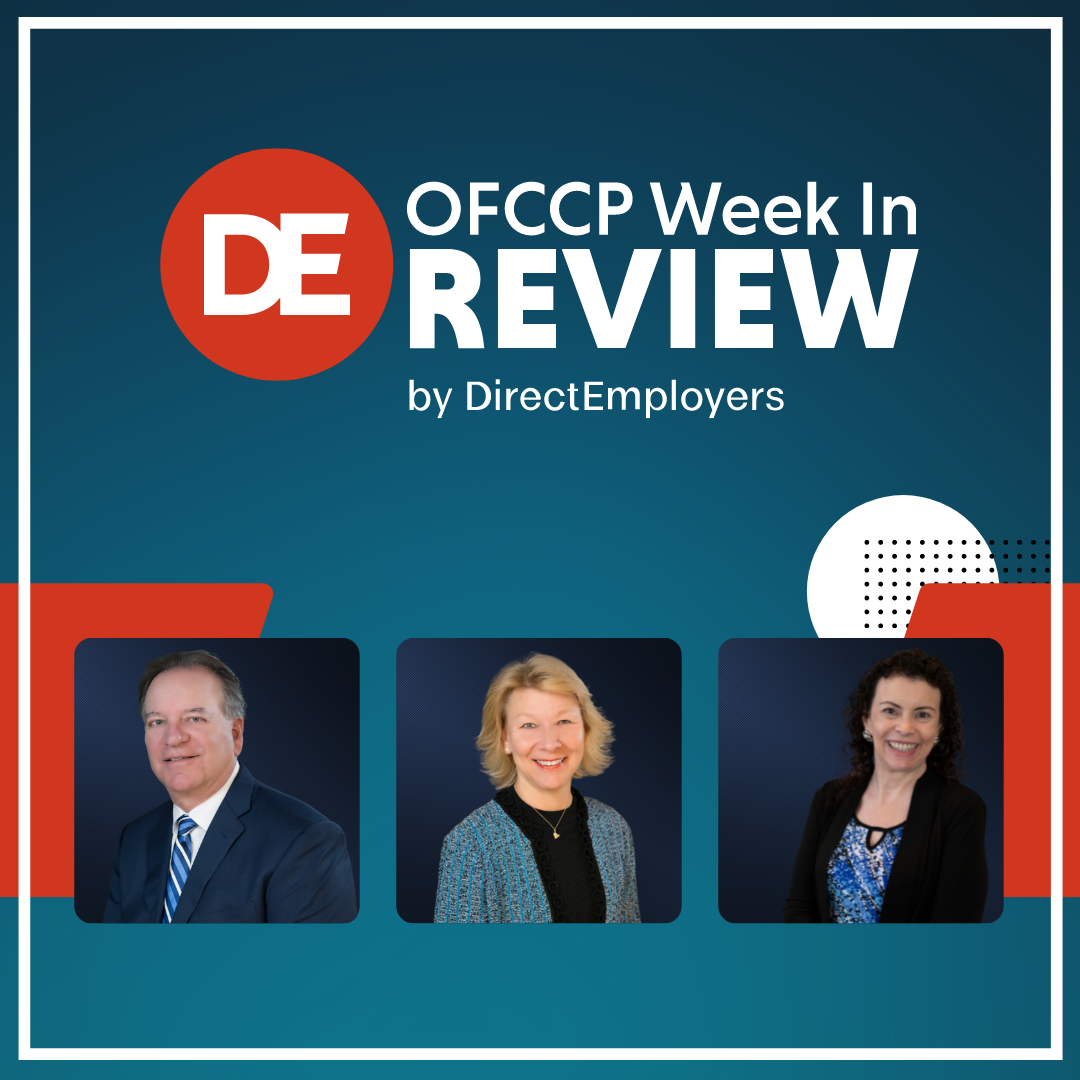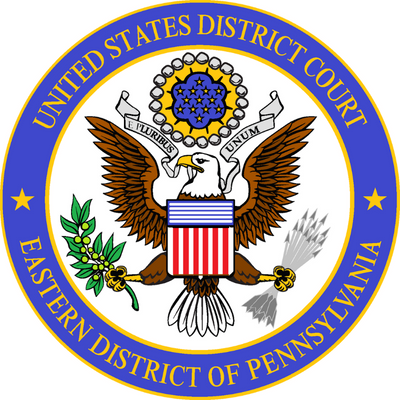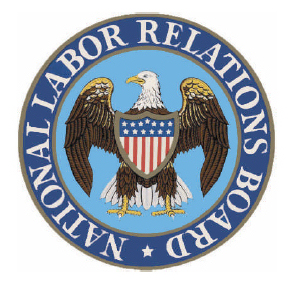
Tuesday, July 23, 2024: Federal Judge in Philadelphia Declined to Block FTC’s Non-Compete Ban
Another Ruling in Similar Case Pending in Texas Federal Court Expected by End of August
Third Lawsuit Pending in Florida Federal Court

Final Rule Background
The FTC Final Rule bans NCCs as an “unfair method of competition” under Section 5 of the FTC Act [15 U.S. Code §45]. We discussed this Rule in detail in a WIR story and a DE Under 3 video. When it voted to approve the Final Rule, the agency’s Democrat majority and Republican minority disagreed as to whether the Commission had the authority to issue it under Sections 5 [15 U.S. Code §45] and 6(g) [15 U.S. Code §46] of the FTC Act. The Democrats said they had the authority under existing case precedent, but the Republicans argued that courts would rule differently today.
Judge Hodge Found FTC Had Statutory Authority to Ban Non-Compete Clauses
In a 39-page opinion, Judge Hodge concluded that the plaintiff company would not, absent a preliminary injunction blocking the Rule, suffer irreparable harm, and even if it did, the company failed to establish that it would succeed on the merits of its lawsuit. The plaintiff would not likely succeed on the merits because the Final Rule was within the agency’s statutory authority, Judge Hodge ruled.
Judge Hodge found that the FTC Act empowered the agency to make both procedural and substantive rules as necessary to prevent unfair methods of competition. “Nothing in Section 5 or Section 6 expressly limits the FTC’s rulemaking power to issuing exclusively procedural rules. Further, nowhere in the text does Congress expressly limit the FTC’s enforcement mechanisms to adjudications; in fact, Congress does just the opposite by empowering the FTC to issue rules,” she wrote.
Elaborating, Judge Hodge stated:
“Congress chose the term “prevent,” which on its face means the FTC was intended to act prophylactically to stop “incipient” threats of unfair methods of competition, not solely responsively through adjudications, as courts interpreting the statute have confirmed. The FTC’s Final Rule serves to do just that: to prevent unfair methods of competition in the form of non-compete agreements, both before they occur as well as after, to cease the past and ongoing harm they inflict as illustrated in the FTC’s Final Rule. If the FTC’s Section 6(g) rulemaking power was limited solely to procedural rules for adjudications as Plaintiff argues, the FTC would only be able to remediate harm once it occurred. This would result in a myopic and illogical interpretation of the ordinary meaning of the statutory text.” [citations omitted]
Major Questions Doctrine
The plaintiff company also argued that the nature of the Final Rule implicates the Major Questions Doctrine (“MQD”), which requires agencies to point to “clear congressional authorization” to regulate in a certain manner. Judge Hodge disagreed. “Because the FTC has previously utilized its Section 6(g) rulemaking authority to promulgate substantive rules to prevent unfair methods of competition that had significant economic impact, this case is distinguishable from other major questions cases,” she decided.
Other Pending Cases
Earlier this month, we reported that Federal District Court Judge Ada Brown of the Northern District of Texas (Dallas) issued a preliminary injunction barring the FTC from enforcing – only as to the plaintiffs in the case – the Final Rule banning NCCs. In contrast to Judge Hodge, Judge Brown concluded that the FTC does not have the authority to adopt regulations prohibiting practices that it deems unfair methods of competition. However, she denied the plaintiffs’ (tax preparation company Ryan LLC, the U.S. Chamber of Commerce, and three others) request to block the Rule nationwide, saying it was not clear based on the record in the case so far whether such an order was appropriate. She stated she would issue a final ruling by August 30, 2024.
Meanwhile, on June 21, a Florida real estate residential housing company, Properties of the Villages, Inc., sued the FTC in the U.S. District Court for the Middle District of Florida (Ocala) also challenging the agency’s authority to issue the Rule and requesting that the court to block its implementation.
Friday, July 26, 2024: OFCCP Issued New Directive on “Expedited Conciliation Procedures”
Yet another reversal of Trump policy

OFCCP’s regulations provide for expedited conciliation, which permits OFCCP to waive its pre-enforcement notice procedures and offer the contractor an expedited conciliation option. Applicable to contractors with multiple establishments, Early Resolution/Expedited Conciliation Procedures are intended to reduce the length of compliance evaluations through early resolutions. They allow OFCCP to work with contractors to develop corporate-wide compliance with OFCCP’s requirements. The thought is that many multi-establishment contractors have centralized human resource systems and corporate-wide policies, so issues OFCCP finds at one contractor establishment may exist at others.
The new Directive is much ado about nothing as few contractors availed themselves of the more generous to contractors expedited conciliation procedures and benefits the Trump OFCCP had innovated. The Trump OFCCP created its expedited conciliation initiative following its settlement of a lawsuit against JBS, a beef processing company. OFCCP sought to settle the case as it was finishing its testimony and was surprised by JBS’ offer to settle the lawsuit, but only if OFCCP also settled three OFCCP audits that had been pending for years and with a five-year immunity nationwide from further audits. JBS had the settlement leverage to demand a “clean sweep” of all outstanding OFCCP audits all bundled together and not just the audit at trial and to stop future audits for 2 ½ times the usual 2-year OFCCP moratorium on audits of AAP Establishments that had been subject to audit. (In 1982 (Reagan years), OFCCP began to exercise its discretion not to audit companies for the two years after they had been in an OFCCP audit. In the Obama years, OFCCP expanded the moratorium period to run from the end of the two-year OFCCP monitoring period which follows almost all OFCCP Conciliation Agreements or Consent Decrees. This remains OFCCP policy and practice to this day.)
Changes in New Directive
A review of the differences between the rescinded DIR 2019-02 and the new DIR 2024-01 reveals that OFCCP made changes largely favorable only to OFCCP and further lessened interest in a program that already drew little contractor interest:
- OFCCP changed the term “Early Resolution Procedures” to “Expedited Conciliation Procedures;”
- In the rescinded Directive, the acronym “ERCA” stood for “Early Resolution Conciliation Agreement with Corporate-Wide Corrective Action.” Under the new Directive, ERCA stands for “Expedited Resolution Conciliation Agreement;”
- The “no audit period,” i.e., the period during which OFCCP will not schedule a new compliance evaluation at that particular establishment following an ERCA is now reduced from five years to three. That thus adds a year (only) to the otherwise post-audit two-year moratorium on further audits at the AAP Establishment in question;
- The new Directive removes the word “material” at all the places it existed in the rescinded Directive in describing both the covered non-discrimination violations and discrimination violations [the new Directive effectively concludes that all violations of OFCCP’s Rules are “material” so all audits experiencing violations are available to the contractor to elect to pursue “expedited procedures”]; and
- In the new Directive, OFCCP changed the term “Compliance Officers” to “Investigators.”
- Many of the deadlines the prior Directive mandated for OFCCP action are now changed to make OFCCP’s deadline aspirational and not required.
How Do Early Resolution Procedures/Expedited Conciliation Procedures Operate?
These procedures work as follows:
- Upon completion of the desk audit, if the contractor has multiple AAP Establishments under audit, OFCCP will seek to persuade the contractor to “go global” and resolve non‐discrimination violations through an ERCA. Examples of violations that fall into this category include, but are not limited to, record keeping, applicant tracking, failure to implement audit and reporting systems, and failure to conduct self-evaluations.
-
- Contractor Requirement. The ERCA will require the contractor to review all, or potentially a subset, of its remaining establishments for similar violations and remedies as outlined by the terms of the agreement.
-
- Contractor Reward. OFCCP will not schedule a new compliance evaluation at that particular establishment (NOT the company) for a specific period from the effective date of the ERCA. Under the new Directive 2024-01, OFCCP reduced that period to three years from the five years provided in DIR 2019-02.
- For discrimination violations, within 14 calendar days, the OFCCP District Office will get involved to schedule essential interviews with appropriate company employees, rejected applicants, and human resources staff. A deeper dive will result in a refined analysis of potential violations. If the refined analysis still indicates a finding of discrimination, the contractor will be offered Expedited Conciliation Procedures with a hope of conciliating and avoiding further review in an on-site visit.
-
- Contractor Requirement. Like any conciliation agreement, the terms will be conciliated based on the findings and the affected parties. However, the ERCA will require the contractor to review all, or a negotiated subset, of its remaining establishments for similar violation(s) during the progress report‐monitoring period, and if necessary, implement corrective actions at those establishments to eliminate the violations(s) and prevent recurrence.
How We Got Here
OFCCP published the now-rescinded DIR 2019-02, on November 30, 2018. That Directive first established early resolution procedures and general guidelines for its implementation. On November 10, 2020, OFCCP published its Final Rule on Nondiscrimination Obligations of Federal Contractors and Subcontractors: Procedures to Resolve Potential Employment Discrimination. (See our story here.) That Final Rule codified an expedited option for resolution applicable to compliance reviews in their early stages. On August 4, 2023, OFCCP published a Final Rule modifying procedures and standards OFCCP uses when issuing pre-enforcement notices and securing compliance through conciliation. DIR 2024-01 provides guidance consistent with the Pre-Enforcement Notice and Conciliation Procedures Final Rule, the agency stated.
Friday, July 26, 2024: NLRB Announced Final Union Election Protection Rule Rescinding Trump-Era Rule
New Rule Slated to Take Effect on September 30
Rule Focuses on Three Key Policies

Although the NLRB announced the Final Rule on Friday, its official publication is not scheduled until the August 1st edition of the Federal Register. The Board will only apply the new Rule to cases filed after the September 30 effective date.
Chairman Lauren M. McFerran (D) was joined by Board Members Gwynne A. Wilcox (D) and David M. Prouty (D) in issuing the Final Rule. Board Member Marvin E. Kaplan (R) dissented, according to the press release.
Three Key Policies
The Final Rule contains three parts, each rescinding a corresponding portion of the Board’s current Rule issued in April 2020, and effective July 31, 2020 (the “2020 Rule”). The preamble section of the Final Rule Notice ends, and the text of the finalized regulations begins, on pdf page 236 of the pre-publication version.
Part 1: Blocking Charge Policy
First, the new Rule returns to the Board’s previously established “blocking charge” policy as most recently reflected in a 2014 Final Rule. NLRB Regional Directors (RDs) will again have the discretion to hold a representation petition in abeyance (to “block” it) when a related unfair labor practice (“ULP”) charge is pending.
The current 2020 Rule limits the circumstances in which RDs could block petitions in the face of pending ULP charges. Such elections must go forward, and the votes will either be counted or impounded, depending on the nature of the charge. Prior to the 2020 Rule, unions routinely filed ULP charges related to the election (“blocking charges”) to pause elections they were likely to lose or to delay decertification bids by workers.
Part 2: Voluntary-Recognition Bar
Under Section 9(a) of the National Labor Relations Act (“NLRA”), an employer’s obligation to collectively bargain is triggered by: (a) a union victory in an NLRB-conducted secret ballot election among employees; or (b) the employer’s voluntary recognition of the labor organization based on a review of union authorization cards signed by a majority of employees. The voluntary-recognition bar doctrine allows a union – after an employer has voluntarily and lawfully recognized it – to represent employees for a “reasonable” period of time without being subject to challenge. In other words, the voluntary recognition bar blocks petitions to decertify unions empowered through voluntary recognition for a certain time period.
The current 2020 Rule provides that unions are only protected from challenge if they notify the NLRB of their recognition and the employer posts a notice alerting workers to their right to file for a decertification election within 45 days of posting. According to the NLRB, under this current Rule, employees rarely file election petitions to oust recognized unions, suggesting that voluntary recognition almost always accurately reflects employee free choice. Thus, the new Final Rule eliminates the required notice-and-election procedure triggered by an employer’s voluntary recognition of a union based on a showing of majority support among employees. The Final Rule provides an immediate recognition bar that lasts a minimum of six months and a maximum of one year, from the date of the parties’ first bargaining session. This voluntary recognition bar will prevent challenges to the status of a newly recognized union until a reasonable period for collective bargaining has passed, the Board stated.
Part 3: Section 9(a) Recognition in the Construction Industry
Due to the nature of the work involved, construction industry employers can, under Section 8(f) of the NLRA, choose to recognize a union without any showing of majority support by employees. Thus, the NLRA allows the construction industry an exemption to Section 9(a). These 8(f) unions may attain full status through an election or voluntary recognition based on majority support.
Prior to the current 2020 Rule, workers had a six-month window following recognition to challenge voluntarily recognized construction unions. The current Rule allows the Board to evaluate a construction industry union’s purported recognition at any time that an election petition is filed. It also requires that a union invoking the removal bar point to more than the language of the applicable collective-bargaining agreement to prove majority support.
The new Final Rule will return to the Board’s prior approach of a six-month limitations period for election petitions challenging a construction employer’s voluntary recognition of a union (as established in Casale Industries, 311 NLRB 951 (1993)). It will also include the principle (established in Staunton Fuel & Material, 335 NLRB 717 (2001)) that sufficiently detailed language in a collective-bargaining agreement can serve as sufficient evidence that voluntary recognition was based on Section 9(a) of the Act.
How We Got Here
The NLRB published its proposed version of the Rule on November 4, 2022 (see our story here). After an extension, the comment period concluded on February 2, 2023, with 110 comments submitted. The Board addresses these comments throughout the preamble contained in pages 1-236 of the pre-publication version of the Final Rule.
The Spring 2024 Regulatory Agenda set a September 2024 target date for publication of the Final Rule. Thus, the agency is slightly ahead of schedule.
Changes from Proposed Version
The Final Rule is identical to the Proposed Rule, but with two additional provisions. (See pages 117-118 of the pre-publication version of the Final Rule.) First, Section 103.21(e), acknowledges (but does not codify) the current case law addressing the application of the voluntary recognition bar when two or more unions are vying to represent employees. Second, Section 103.21(g), codified the Board’s view that the paragraphs of Section 103.21 are intended to be severable. The Board’s two actions – rescission of the 2020 rule and adoption of a new rule – are intended to be separate and severable. This portion of the Final Rule addressing voluntary recognition, in turn, is intended to be severable from the other portions of the final rule rescinding and replacing the portions of the 2020 Rule that addressed the blocking charge policy and rescinding the portion of the 2020 Rule that addressed proof of majority support for labor organizations representing employees in the construction industry.
In Brief
Tuesday, July 23, 2024: Texas Industrial Sales Company Filed a Lawsuit Challenging EEOC’s PWFA Regulations Alleging Congress lacked a Quorum When Passing the Act

We previously reported that on February 27, U.S. District Judge James Wesley Hendrix – who presides in the same court in which Brandon & Clark filed their lawsuit last week – blocked enforcement of the PWFA statute, and corresponding regulations, but only as to the state of Texas in its capacity as an employer. Judge Hendrix concluded, in State of Texas v. Department of Justice (Case No. 5:2023cv00034), that the U.S. House of Representatives violated the U.S. Constitution’s quorum requirements by allowing multiple lawmakers to vote, by proxy (for a limited period due to the COVID-19 pandemic), on the 2023 Consolidated Appropriations Act. H.Res.965, adopted on May 15, 2020.
The Quorum Clause of the U.S. Constitution provides that the majority of members of the chambers of Congress be physically present at a given meeting for the body to validly exercise its powers. On April 26, the U.S. Department of Justice appealed that decision to the Fifth Circuit. In its lawsuit filed on Tuesday, Brandon & Clark cited the holding in the State of Texas case in asking the court to invalidate the PWFA regulations as they apply to the company as a private employer.
Thursday, July 25, 2024: USDOL ODEP Unveiled Poster for 2024 Disability Awareness Month
Via its weekly newsletter, the U.S. Department of Labor’s Office of Disability Employment Policy (“ODEP”) announced the availability of the official poster for National Disability Employment Awareness Month (“NDEAM”) coming up in October 2024.
In May, we reported that the theme for this year’s NDEAM is “Access to Good Jobs for All”.
New Publications
July 25, 2024: U.S. Department of Labor’s Office of Disability Employment Policy posted an online toolkit to provide employers in the construction, manufacturing, and clean energy industries with best practices for recruiting, hiring, advancing, and retaining disabled workers.
Looking Ahead:
Upcoming Date Reminders
We added one NEW item to our calendar this week:
March 11, 2024: Previous effective date of NLRB’s Final Rule on Standard for Determining Joint-Employer Status under the NLRA (per U.S. District Judge’s order; original February 26, 2024, effective date extended); On March 8, 2024, a U.S. District Judge vacated this Final Rule and on May 7, 2024, the NLRB filed a Notice of Appeal – stay tuned for further developments
August 8, 2024: Deadline for comments on OFCCP’s modified proposal to Resurrect, with Changes, Monthly Employment Utilization Report for Construction Contractors
August 12, 2024: Comments due on U.S. Census Bureau’s “American Community Survey Timeline for Implementing Updated 2024 Race and Ethnicity Data Standards.”
August 20, 2024: Comments due on US DOL VETS’ Request for Information on “Black Veterans and Good Jobs”
August 29, 2024 (11:00 – 5:30 EST): US DOL WHD online seminar on prevailing wage requirements for federally-funded construction projects; register here
September 4, 2024: Scheduled effective date for Federal Trade Commission Final Rule banning most non-compete agreements
NEW September 30, 2024: U.S. NLRB’s Final Election Protection Rule scheduled to take effect
September 2024: OFCCP’s current target date for its Final Rule on “Technical Amendments” to Update Jurisdictional Thresholds & Remove Gender Assumptive Pronouns (RIN: 1250-AA16)
September 2024: U.S. DOL WHD’s target date to publish an NPRM on “Employment of Workers With Disabilities Under Special Certificates” (Subminimum Wage Rule) (RIN: 1235-AA14)
October 2024: EEOC’s target date for proposal to amend its regulations regarding the electronic posting of the “Know Your Rights” Poster (RIN: 3046-AB29)
November 5, 2024: Federal Congressional and Presidential Election
December 2024: EEOC’s target date to publish its NPRM to amend its regulations on exemptions to certain recordkeeping and reporting requirements (RIN: 3046-AB28)
December 2024: U.S. OSHA’s current target date to publish its Final Rule on Occupational Exposure to COVID-19 in Healthcare Settings (RIN: 1218-AD36)
January 1, 2025: Second effective date for US DOL WHD’s Final Rule on Defining and Delimiting the Exemptions for Executive, Administrative, Professional, Outside Sales, and Computer Employees (Overtime Rule); the standard salary level necessary for exemption – i.e., eligible for overtime pay – will increase from $43,888/year to $58,656/year and the highly compensated employee threshold will increase from $132,964/year to $151,164/year
January 2025: EEOC’s target date to publish its NPRM to amend its regulations at 29 CFR Part 1602 to provide for a pay data collection (RIN: 3046-AB15)
May 21 – May 23, 2025: DEAMcon25 in Scottsdale, Arizona
May 2025: OFCCP’s current target date for its Notice of Proposed Rulemaking to “Modernize” Supply & Service Contractor Regulations (RIN: 1250-AA13)
May 2025: FAR Council’s current target date for its Final Rule to Prohibit TikTok [or any successor application or service developed or provided by ByteDance Limited] on Federal Government Contractor Devices (RIN: 9000-AO58); the Interim Rule is here
THIS COLUMN IS MEANT TO ASSIST IN A GENERAL UNDERSTANDING OF THE CURRENT LAW AND PRACTICE RELATING TO OFCCP. IT IS NOT TO BE REGARDED AS LEGAL ADVICE. COMPANIES OR INDIVIDUALS WITH PARTICULAR QUESTIONS SHOULD SEEK ADVICE OF COUNSEL.
SUBSCRIBE.
Subscribe to receive alerts, news and updates on all things related to OFCCP compliance as it applies to federal contractors.
OFCCP Compliance Text Alerts
Get OFCCP compliance alerts on your cell phone. Text the word compliance to 18668693326 and confirm your subscription. Provider message and data rates may apply.


